The only changes evident here are additions made by the new horse owners.
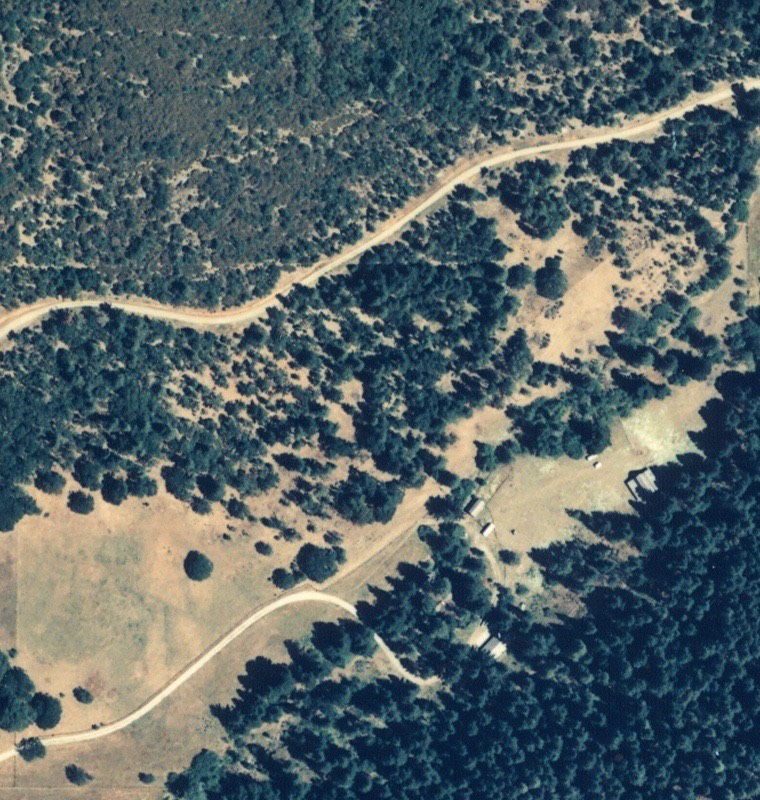
The change is apparent in three different locations. Look along the left edge of the map and you’ll notice a grassy area (now dried and tan) that changes color to a darker tan along the property line. That’s a dead giveaway that there are grazing animals on the light-colored side of the fence. They’ve eaten down so much of the grass that only the lighter-colored stubble shows through. You can see the same effect in three other places: just north of the barn, a big open area a hundred yards north of the barn, and along the right edge of the photo. This gives you an idea of the area that has been opened up to the horses for grazing. Not visible in this photo is the northern fence that kept the horses from wandering onto the wavy dirt road across the upper third of the land.
There are a few other oddities in this photo: some rectangular objects: one next to the shop and two smaller ones northwest of the barn. These are not permanent structures; I believe that they are stacks of hay bales. Horses eat a lot of hay, and during the summer there’s no rain, so there’s no need to keep the hay in the barn. The only thing wrong with this hypothesis is that these objects are too far from the horses. A hay bale weighs about 120 pounds; one doesn’t simply grab it and toss it over the fence. If, however, the owner had many horses, then it is more likely that the horses were fed by tossing a bale of hay into the back of a pickup truck, then driving the truck along the pasture, spreading hay along a long line. If all the hay were dumped at a single point, the dominant horses would drive away the others and keep all the hay to themselves.
You can also see a water tank just north of the barn; it’s a little round thing. It’s a big tank; that suggests a lot of horses.
But there’s much worse news. It starts in the southwestern area of the Gulch, near the entry:
Notice the missing tree in the upper left? They cut it down. And this was not some random act. They cut down a lot more trees. Here’s a before and after view of the area near the junction of the main driveway and the secondary driveway:
These people wiped out a bunch of trees; going over the ground in the area covered by these pictures, I counted 30 stumps, all at least 30 inches in diameter. The discrepancy arises because some of the trees were too close together to resolve into two separate trees, so I counted them on the photo as one. In other cases, a conifer rose out of a collection of oaks and madrones, so that when it was removed, there was still plenty of tree left behind. There’s only one reason to cut down that many trees: logging. They needed money and so they cut down trees. Those trees were all about 60 years old. It took 60 years to grow them and 5 years for a new owner to take them out. Now, I can understand this, to some extent. If we were in desperate financial straits and a little logging would save our bacon, I would reluctantly proceed. But these people didn’t accomplish anything with their effort, because they ended up selling the land anyway. I’m not sure if there were three owners after them or two (including myself). But I do know that they sold the land right around the time these trees were cut down.
It gets even worse. They let their horses run loose in the forest. Horses are bad news for oak trees because they chew on the bark, leaving a big hole in the tree, like this:
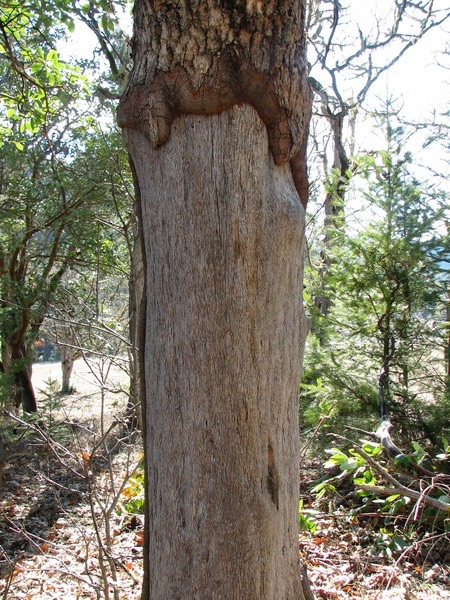
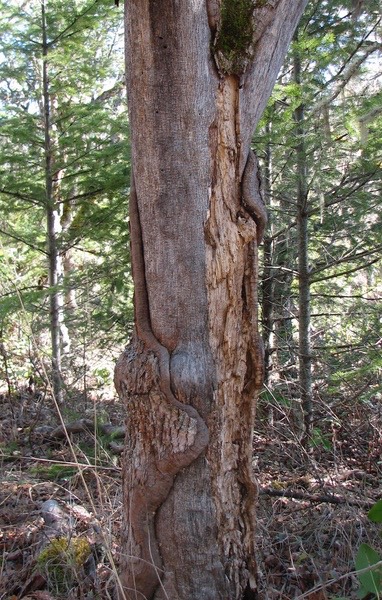
This chewing can kill a tree. I have perhaps a hundred oaks on my land that have been killed in this way:
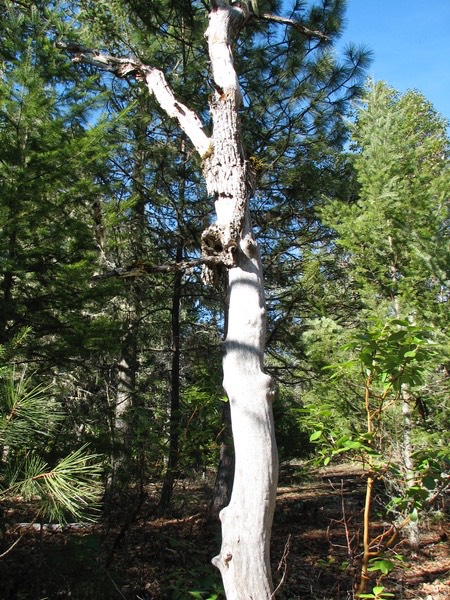
The outcome of the horse chewing depends upon two factors: the diameter of the tree and access to it from all directions. If the tree is bigger than around 10 inches in diameter, it’s too big for the horse to get a good grip with his teeth, and the tree will escape any injury. If the tree is smaller, it will certainly be chewed on, but the degree of damage depends upon the degree to which the horse can chew from any direction. If part of the tree is protected by proximity to another tree, the bark on that side will escape chewing and the tree will survive. Indeed, I would guess that another hundred oaks escaped death in this way, although many had so much heartwood exposed that they will never be strong. Still, if a tree survives the chewing, it starts to grow new bark to cover the injured area:
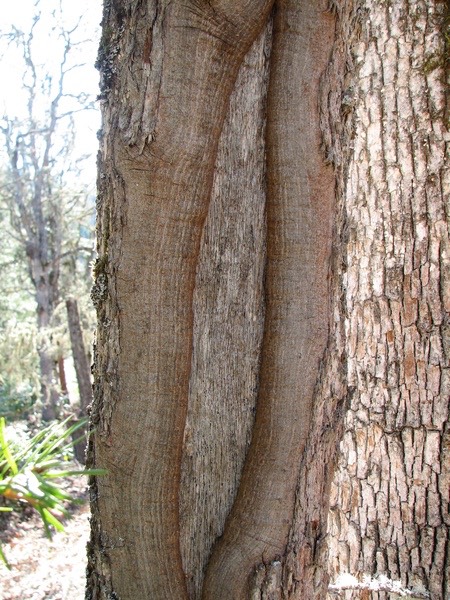
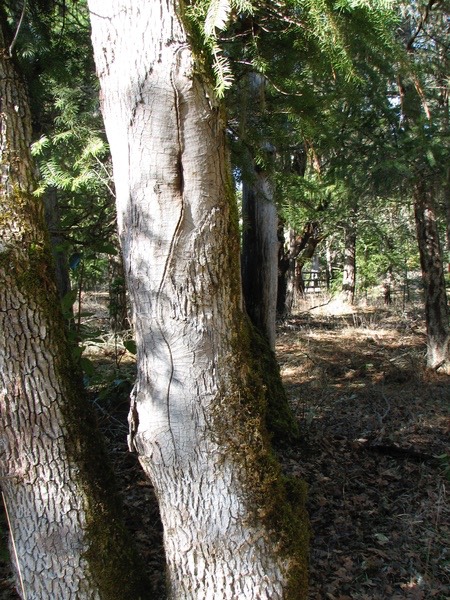
This process is a slow one. These pictures were taken twenty years after the chewing. Some of these trees will still be repairing the damage long after I have died. Most of the trees that were killed were between 40 and 100 years old. And all for a few years of letting horses roam freely!
